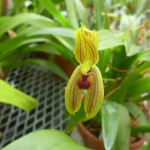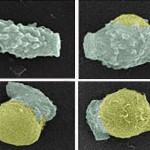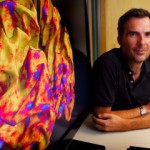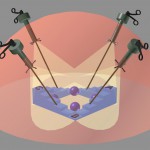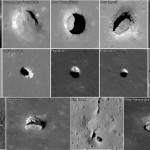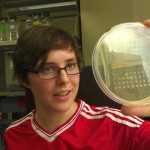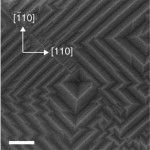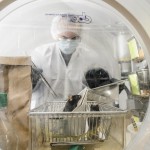Tag Research
Family tree for orchids explains their astonishing variability
Orchids, a fantastically complicated and diverse group of flowering plants, have long blended the exotic with the beautiful. Most species live on trees, often in remote, tropical mountains. Their flowers can be strange - one even flowers underground, and many species deceive their pollinators into thinking they are good to eat.
Understanding El Niño: Q&A with Dan Vimont
What’s fierce, massive and likened to Godzilla? The 2015 El Niño — or at least in its vivid media descriptions.
Morgridge Institute selects Pagliarini to lead campus metabolism initiative
Dave Pagliarini, a University of Wisconsin–Madison associate professor whose departmental home put metabolism research on the map worldwide, will help define the future of Wisconsin metabolism science as a lead investigator at the Morgridge Institute for Research.
An ounce of prevention: Research advances on ‘scourge’ of transplant wards
The fungus Cryptococcus causes meningitis, a brain disease that kills about 1 million people each year - mainly those with impaired immune systems due to AIDS, cancer treatment or an organ transplant. It's difficult to treat because fungi are genetically quite similar to humans, so compounds that affect fungi tend to have toxic side effects for patients.
UW-Madison engineers contribute expertise to Oshkosh Corporation
When mechanical engineering Professor Dan Negrut took his first ride in Oshkosh Corporation’s new, highly mobile armored truck in July, he marveled at the vehicle’s capabilities.
‘Lazy eye’ may bully the brain into altering its wiring
Colorful and expressive, the eyes are central to the way people interact with each other, as well as take in their surroundings. That makes amblyopia — more commonly known as "lazy eye" — all the more obvious, but the physical manifestation of the most common cause of vision problems among children the world over is actually a brain disorder.
Boundless Together: The research behind the commercial
A new commercial for UW–Madison will premier during the season-opening Badger football game on Aug. 5. Learn more about the cutting-edge research highlighted in the spot.
Wireless microcamera clusters broaden laparoscopic imaging
A revolutionary integrated imaging system under development at the University of Wisconsin–Madison could significantly advance laparoscopy, a minimally invasive surgical procedure that, over the last half century, has seen only incremental improvements in imaging.
New data from Antarctic detector firms up cosmic neutrino sighting
Researchers using the IceCube Neutrino Observatory have sorted through the billions of subatomic particles that zip through its frozen cubic-kilometer-sized detector each year to gather powerful new evidence in support of 2013 observations confirming the existence of cosmic neutrinos.
Fall Competition aims to set standard for research excellence
In addition to the recently announced UW2020 research funding initiative, the Office of the Vice Chancellor for Research and Graduate Education is continuing its longstanding Fall Competition for research funding.
Novel Morgridge technology may illuminate mystery moon caves
It's widely believed that the moon features networks of caves created when violent lava flows tore under the surface from ancient volcanoes. Some craters may actually be "skylights" where cave ceilings have crumbled.
More details on origin of world’s favorite beer-making microbe
The crucial genetic mashup that spawned the yeast that brews the vast majority of beer occurred at least twice - and both times without human help - according to a University of Wisconsin–Madison study published Aug. 11 in the journal Molecular Biology and Evolution.
Discovery in growing graphene nanoribbons could enable faster, more efficient electronics
Graphene, an atom-thick material with extraordinary properties, is a promising candidate for the next generation of dramatically faster, more energy-efficient electronics. However, scientists have struggled to fabricate the material into ultra-narrow strips, called nanoribbons, that could enable the use of graphene in high-performance semiconductor electronics.
“Happy Days Study” meets the microbiome
For almost 60 years, the Wisconsin Longitudinal Study (WLS) has closely followed the life course of roughly a third of Wisconsin high school graduates from the class of 1957.
UW leading $2.6 million effort to improve solar power plants
The U.S. Department of Energy has awarded $2.6 million to a research collaboration led by University of Wisconsin–Madison engineering physics research Professor Mark Anderson that aims to advance the technology of utility-scale concentrating solar power (CSP) plants.

